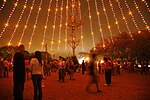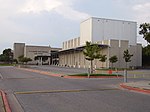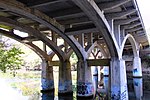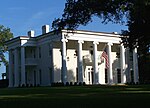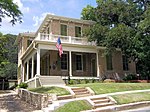Zilker Botanical Garden

The Zilker Botanical Garden (31 acres; 125,000 m²) is a botanical garden of varied topography located on the south bank of the Colorado River at 2220 Barton Springs Road, near downtown Austin, Texas, United States. Theme gardens include the Taniguchi Japanese Garden, The Riparian Streambed, The Hartman Prehistoric Garden, and The Mabel Davis Rose Garden.The Botanical Garden was established as a non-profit organization in 1955, and is the centerpiece of Zilker Park. It features several independently maintained gardens, each of a particular focus: City of Austin's Green Garden Cactus and Succulent Garden Hartman Prehistoric Garden Herb and Fragrance Garden Isamu Taniguchi Oriental Garden Mabel Davis Rose Garden Doug Blachly Butterfly Trail and Garden Pioneer Village
Excerpt from the Wikipedia article Zilker Botanical Garden (License: CC BY-SA 3.0, Authors, Images).Zilker Botanical Garden
South Mopac Expressway, Austin
Geographical coordinates (GPS) Address External links Nearby Places Show on map
Geographical coordinates (GPS)
| Latitude | Longitude |
|---|---|
| N 30.2689 ° | E -97.7714 ° |
Address
Zilker Botanical Garden
South Mopac Expressway
78703 Austin
Texas, United States
Open on Google Maps
